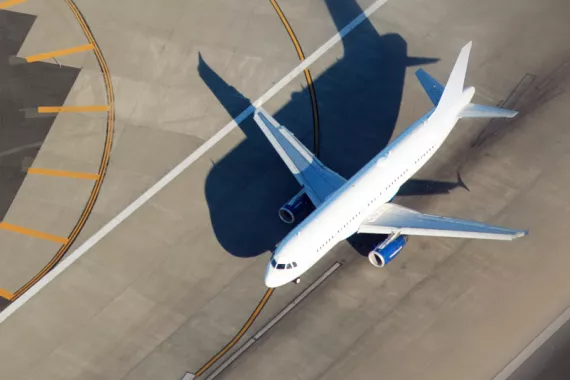
Case Overview
The Montreal Convention is an international treaty specifying the liability of air carrier forair passenger death or bodily injury; delays of passengers, cargo or luggage; or lost baggage or cargo.
The Montreal Convention protects passengers and shippers from potential losses and provides airlines with consistent liability rules. Its rules apply to international flights and allow non-U.S. citizens to file lawsuits against U.S. airlines.
Key takeaways about the Montreal Convention
- The Montreal Convention is a treaty that established a framework for airline liability in the case of bodily injury, death, lost goods, delayed goods, damaged goods and delayed flights.
- The Montreal Convention builds on an earlier document called the Warsaw Convention by better balancing the benefits between consumers and air carriers.
- Passengers (or their loved ones) and shippers can file claims for losses with airlines or in court for incidents involving bodily injury or death.
How does the Montreal Convention work?
International Civil Aviation Organization (ICAO) members agreed in 1999 to a treaty that updates and standardizes previous agreements about airline liability. Some experts believed that the earlier Warsaw Convention set artificial limits on compensation for physical harms and didn’t allow victims of physical harm to claim compensation in their state of residence. This may give the impression of a “pro-carrier philosophy.”
The creators of the Montreal Convention sought a better balance between benefiting air carriers and passengers. The convention, sometimes called MC99, also allows changes to compensation limits based on the current cost of living. But it also limits liabilities, such as not allowing claimants to seek punitive damages.
The Montreal Convention went into effect on November 4, 2003, with 141 signatories. These signatories include countries and government bodies. The number has fluctuated over time, in some cases as a result of several countries becoming part of the European Union. As of October 18, 2024, ICAO claimed 140 state parties.
History of the Montreal Convention
In the early days of international air transport, aviation law was an emerging issue. There were few consistent rules to establish airline liability or to compensate passengers for bodily injury, delays or lost luggage. The commercial aviation laws were a patchwork of regulations. The Warsaw Convention of 1929 – also known as the Convention for the Unification of Certain Rules for International Carriage by Air – was an early attempt to set liability rules for airlines that carry cargo, luggage or people to generate revenue.
The Warsaw Convention signatories collaborated to modernize the rules over the years. Still, the Montreal Convention was a more comprehensive approach to updating passenger rights in the event of incidents ranging from flight delays to mid-air collisions.
What is the difference between Montreal Convention and Warsaw Convention?
In creating the Montreal Convention, the International Civil Aviation Organization (ICAO) sought to update the earlier Warsaw Convention. Here are some key differences ICAO addressed with the Montreal Convention.
- Higher liability limits for air carriers
- The option for bringing claims in passengers’ or airline’s home country
- A framework to allow air carriers to use electronic documentation for cargo shipments
Airline liability under the Montreal Convention
The Montreal Convention establishes when air carriers are liable for international travel incidents that cause injury, delays or damage to goods. It also specifies how much compensation they may have to pay.
Deaths and bodily injuries
Claimants must prove:
- A bodily injury or death was caused by an accident.
- The accident occurred either aboard or while boarding or exiting the aircraft.
Luggage claims
The Montreal Convention holds the airline liable for the destruction or loss of checked baggage under airline control during international flights. Air carriers can argue that the claimant’s baggage was defective or that the owner’s negligence caused the loss or damage.
Carry-on luggage is also covered, but passengers must prove that the carrier or its employees were responsible for the damage.
Montreal Convention compensation limits
Rather than use a specific nation’s currency, the Montreal Convention uses “special drawing rights” (SDRs) to set compensation. The International Monetary Fund valued one SDR at 1.33318 US dollars as of October 18, 2024. On that date, the ICAO also increased compensation limits. The new limits of liability were set at:
- $202,500 or 151,880 SDRs for bodily injury or death; a second tier of liability removes limits if the carrier is at fault
- $8,400 or 6,303 SDRs for passenger delays
- $2,000 or 6,303 SDRs for baggage that is damaged, delayed destroyed or lost
- $35 or 26 SDRs for shipped goods that are damaged, delayed, destroyed or lost
Contact an aviation lawyer
If you or a loved one have been physically injured during an international flight, you may be entitled to compensation. An aviation attorney at Motley Rice can examine the facts of your case and help determine what legal options are available for you to pursue justice.
Contact our team by filling out our online form or calling 1.800.768.4026.
How to make a claim under the Montreal Convention
The process and time limits for filing a claim under the Montreal Convention depend on the type of incident. The Montreal Convention requires that passengers or shippers submit claims in writing to the carrier in the case of cargo, delays and injuries.
Baggage: Passengers whose checked luggage has been damaged must file a complaint with the carrier within seven days of receiving the luggage. For cargo, a complaint must be filed within 14 days. Passengers must file a delay-related complaint within 21 days “from the date on which the baggage or cargo have been placed at his or her disposal.”
Bodily injury or death: The claimant must bring the claim formally in court within two years of the accident date.
Cargo: Shippers must file a complaint about damaged cargo with the carrier within 14 days of receiving the cargo. Delayed cargo claims must be reported within 21 days.
Delayed Flights: Passengers must file a claim for a delayed flight within two years of either when the plane should have arrived or when it did arrive. That date is to be determined by the court with jurisdiction over the claim.
Who can file a Montreal Convention claim?
The Montreal Convention allows citizens of member states to file claims in either their home country or the home country of the airline. For example, citizens of another member country could file claims in U.S. courts for incidents involving U.S. airlines. Likewise, American citizens could file claims in another member country against an airline based in that country.
Countries that have signed the Montreal Convention
Below are countries that had signed or ratified the Montreal Convention when it went into effect on November 4, 2003.
Albania | Finland | Norway |
Can passengers sue for amounts higher than the Montreal Convention’s limits?
The Montreal Convention’s limits may seem low for bodily injury or death. However, the limits don’t apply to injury claims unless the airline can show negligence on someone’s part.
Additionally, plane crash victims or their loved ones may be able to sue other entities, such as an aircraft manufacturer or an airport. Contact an aviation lawyer to learn whether you might file a lawsuit.
Our international aviation law experience
Motley Rice attorneys have advocated for aviation crash victims in high-profile cases, including the Asiana Airlines Flight 214 crash and the 9/11 terrorist attacks.
Mary Schiavo is an attorney, author and former U.S. Department of Transportation inspector general. She often serves as an aviation analyst for the media.
Former Air Force navigator James Brauchle has more than two decades of experience with aviation lawsuits. Jim is representing a victim of the Delta Flight 4819 crash.
Key takeaways
How does the Montreal Convention work?
History of the Montreal Convention
Airline liability under the Montreal Convention
How to make a claim under the Montreal Convention
Countries that have signed the Montreal Convention
Can passengers sue for amounts higher than the Montreal Convention’s limits?
Our international aviation law experience
- Sources
- Institute of International Shipping and Trade Law. The Montreal Convention 1999.
- International Air Transport Association. CONVENTION FOR THE UNIFICATION OF CERTAIN RULES FOR INTERNATIONAL CARRIAGE BY AIR.
- International Air Transport Association. The Montreal Convention 1999 (MC99).
- International Civil Aviation Organization. CONVENTION FOR THE UNIFICATION OF CERTAIN RULES FOR INTERNATIONAL CARRIAGE BY AIR DONE AT MONTREAL ON 28 MAY 1999.
- International Civil Aviation Organization. The Postal History of ICAO.
- Lexology. Air Transport: Global Overview.
- International Civil Aviation Organization. International air travel liability limits set to increase, enhancing customer compensation.
- Plaintiff Magazine. Asiana Flight 214 And The Montreal Convention.
- Transnational Litigation Blog. Personal Jurisdiction and the Montreal Convention.


